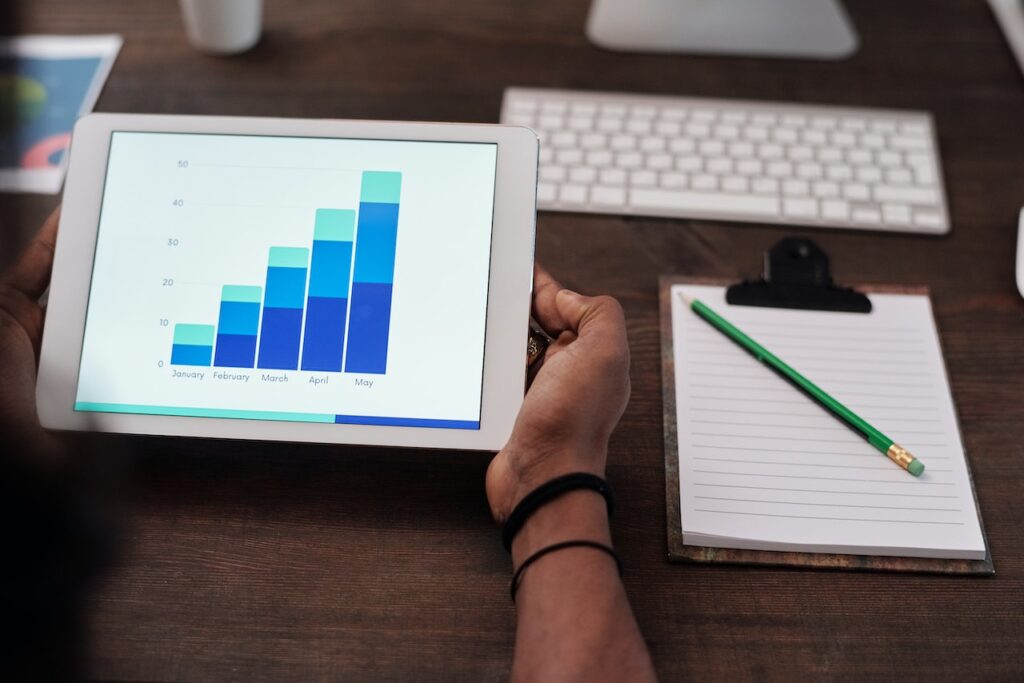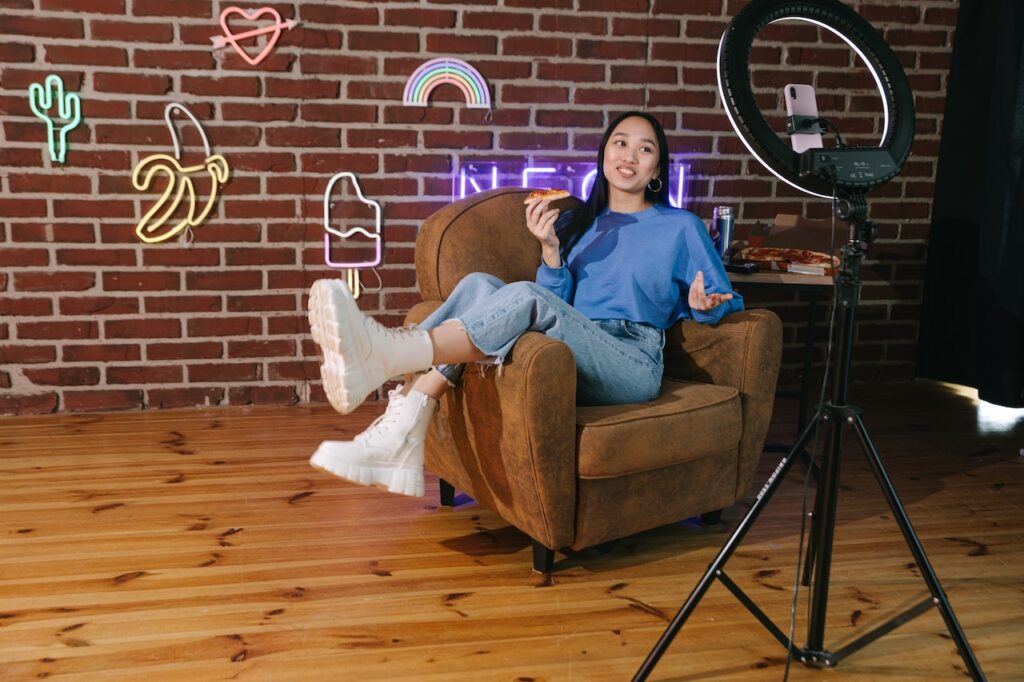Ever wondered what makes some influencer collaborations sizzle while others fizzle? Well, wonder no more! In this blog post, we’re diving deep into supercharging your influencer campaigns, where the influencer marketing engagement rate reigns supreme.
We’ll unravel the secrets that transform ordinary campaigns into extraordinary ones, ensuring your brand gets noticed and leaves a lasting impression. So, if you’re eager to boost your influencer marketing game and have your audience hanging on your every word, join us on this thrilling journey.
What is the Engagement Rate?

Engagement rate is a crucial metric in digital marketing that measures the level of interaction and involvement an audience has with content. It is particularly significant in influencer marketing, social media, and content-driven campaigns, as it gauges the effectiveness of content in capturing the audience’s attention.
Understanding engagement rates allows influencer marketing companies in India, brands, and marketers to assess the impact of their content and its resonance with their target audience.
Key Components of Engagement Rate
Engagement rate is typically calculated based on several key components:
- Likes (Reactions): The number of likes or reactions a piece of content receives indicates the audience’s approval or positive sentiment.
- Comments: The number of comments the audience leaves reflects their willingness to converse or discuss the content.
- Shares (Reposts): The instances where the content is shared or reposted by the audience, extending its reach to a broader audience.
- Click-Through Rate (CTR): The percentage of people who click on links or call to action within the content, showing interest in exploring further.
- Views (for Video Content): The number of times a video content piece is viewed, indicating the level of interest and engagement with video content.
Calculating Engagement Rate
The engagement rate is stated as a percentage, and here is the formula for calculating it:
Engagement Rate (%) = [(Engagements / Reach or Impressions) x 100]
Engagements: This includes likes, comments, shares, clicks, and other forms of interaction with the content.
Reach or Impressions: The total number of people who saw the content organically or through paid promotion.
Influencer Marketing and Engagement Rate
The influencer marketing engagement rate is a critical metric for evaluating the performance of influencer collaborations. It helps brands assess the influencer’s reach and ability to connect authentically with their audience. A high engagement rate indicates the influencer has a genuinely engaged and responsive follower base.
Selecting the Right Influencers

Choosing the right influencers is a critical step in influencer marketing, as it directly impacts the success of your campaigns. The selection process involves identifying individuals with credibility, reach, and alignment with your brand values and target audience.
Many influencer marketing agencies in India specialize in this process, helping brands find the perfect partners for their campaigns. Here, we’ll explore the essential considerations and strategies for selecting influencers.
Identifying Your Campaign Goals
Before you start the influencer selection process, you must clearly understand your campaign goals. These goals will shape your criteria for choosing influencers. Common campaign goals include:
- Brand Awareness: Increasing visibility and recognition of your brand.
- Engagement: Fostering interactions and discussions around your products or services.
- Lead Generation: Capturing potential customers’ information for future marketing efforts.
- Sales Conversion: Encouraging direct purchases or transactions.
Defining Your Target Audience
Understanding your target audience is paramount. Consider your ideal customer’s demographics, interests, behaviors, and pain points. This information will guide you in finding influencers whose followers align with your target audience and have a strong influencer marketing engagement rate, ensuring your campaigns resonate effectively.
Influencer Categories and Niches
Influencers come in various categories and niches, such as:
1. Macro-Influencers: Celebrities or well-known figures with large follower bases.
2. Micro-influencers: Individuals with smaller but highly engaged and niche-specific audiences.
3. Industry Experts: Professionals or experts in a specific field.
4. Content Creators: Creating valuable and engaging content within a niche.
Choose the category that best suits your campaign objectives and budget.
Analyzing Influencer Reach and Engagement
Assess an influencer’s reach and engagement rate to gauge their effectiveness. Look at metrics like:
- Follower Count: The number of followers an influencer has.
- Engagement Rate: The percentage of an influencer’s followers actively engage with their content (likes, comments, shares).
Budget and Negotiation
Determine your influencer marketing budget and be prepared for negotiation. Influencers may charge varying rates based on their reach and expertise. When working with influencer marketing services in India, having a clear budget is essential to ensure a successful collaboration that aligns with your financial goals.
Influencer Platforms and Tools
Utilize influencer marketing platforms and tools to identify potential influencers, analyze their metrics, and streamline collaboration.
Setting Clear Campaign Objectives

In influencer marketing, setting clear campaign objectives is the foundation for successful campaigns. Objectives define your influencer collaboration’s purpose, direction, and expected outcomes. Here, we’ll explore the importance of setting clear campaign objectives and provide insights into how to help you achieve a higher influencer marketing engagement rate.
Defining Specific Campaign Objectives
To set clear objectives, consider the following steps:
1. Identify Your Primary Goal
Determine the overarching goal of your influencer campaign. Common objectives include:
- Brand Awareness: Increasing visibility and recognition.
- Engagement: Encouraging audience interaction and discussions.
- Lead Generation: Capturing potential customer information.
- Sales Conversion: Directly driving purchases or transactions.
2. Make Objectives SMART
See if your objectives are Specific, Measurable, Achievable, Relevant, and Time-bound (SMART). For example, instead of a vague goal like “increase engagement,” you might set a SMART objective like “increase Instagram post engagement by 20% over the next three months.”
3. Set Key Performance Indicators (KPIs)
Determine the particular metrics that will be used to measure the success of each objective. KPIs might include likes, comments, shares, click-through rates, or conversions.
Monitoring and Adjusting
Throughout the campaign, monitor progress toward your objectives. If necessary, be prepared to adjust strategies and tactics to stay on course and maximize results.
The Role of Authenticity in Driving Engagement
Authenticity is powerful in marketing and engagement. It involves genuine, transparent, and real interactions with your audience. In this explanation, we’ll explore the significance of authenticity and how it plays a central role in driving influencer marketing engagement rates.
What Is Authenticity?
Authenticity in marketing refers to being true to your brand’s values, mission, and voice. It means being sincere, honest, and transparent in your communication and actions.
Authenticity and Engagement
Authenticity is closely linked to engagement in several ways:
- Building Trust: When your audience senses authenticity, they are more likely to trust your brand. Trust is the foundation of strong engagement.
- Creating Emotional Connections: Authenticity can evoke emotions and make your audience feel more connected to your brand. Emotional engagement is often more profound and long-lasting.
- Encouraging User-Generated Content: Authenticity can inspire your audience to create content related to your brand, further increasing engagement.
How to Leverage Authenticity for Engagement
To harness the power of authenticity for engagement, consider the following strategies:
- Be Transparent: Share your successes and challenges. Transparency builds trust.
- Tell Authentic Stories: Share real stories about your brand’s journey, values, and the people behind it.
- Listen and Respond: Listen to your audience’s feedback and respond sincerely. Engage in two-way communication.
- Showcase Real Customers: Feature real customers and their experiences with your brand. User-generated content is authentic and relatable.
- Stay Consistent: Maintain a regular brand voice and image across all platforms and interactions.
Exploration of Interactive Content Types

Interactive content has become a game-changer in the world of digital marketing. It engages audiences, encourages participation, and fosters meaningful connections. This exploration will delve into various interactive content types that can elevate your engagement strategy.
1. Polls and Surveys
Description: Polls and surveys are questions presented to your audience, allowing them to vote or provide feedback on specific topics.
Engagement Benefit: Polls and surveys empower your audience by giving them a voice. They create a sense of involvement and can be used to gather valuable insights.
2. Q&A Sessions
Description: Live question-and-answer sessions, often conducted via social media or webinars, where the audience can ask questions in real-time.
Engagement Benefit: Q&A sessions provide direct interaction with your audience, offering expert insights, building trust, and addressing their specific concerns.
3. Contests and Giveaways
Description: Contests challenge participants to submit content, answer questions, or perform specific tasks for a chance to win prizes or recognition.
Engagement Benefit: Contests generate excitement and incentivize active participation. They can expand your reach as participants share their entries.
5. Interactive Videos
Description: Videos that enable viewers to make choices or interact with the content, such as branching narratives or clickable elements.
Engagement Benefit: Interactive videos provide an immersive experience, allowing viewers to shape the story and explore different outcomes.
6. Interactive Email Campaign
Description: Emails incorporating interactive elements like buttons, quizzes, or product carousels.
Engagement Benefit: Interactive emails enhance click-through rates and encourage subscribers to act, whether purchasing or filling out a survey.
Data Analysis and Optimization

Data analysis and optimization are the compass guiding your campaign’s success. Here, we explore the pivotal role of data-driven insights and strategic optimization in maximizing your influencer marketing efforts.
The Power of Data Analysis
- Performance Assessment: Analyzing data allows you to measure the effectiveness of your influencer campaigns, providing insights into what’s working and what needs improvement.
- Audience Understanding: Data unveils valuable information about your target audience’s preferences, behavior, and engagement patterns, enabling you to tailor your content accordingly.
- Influencer Evaluation: Data-driven metrics help evaluate influencers’ performance, ensuring you collaborate with those who resonate best with your brand and audience.
Strategic Optimization
- Content Tweaks: Use data insights to refine content strategies, such as adjusting messaging or content formats.
- Audience Targeting: Optimize targeting based on audience data to ensure your campaigns reach the right people.
- Influencer Selection: Continuously assess influencer performance and adjust collaborations to align with campaign goals.
A/B Testing
- Content Experiments: Conduct A/B tests on different content variations to determine which resonates most with your audience.
- Landing Pages: Test different landing page designs and calls to action to improve conversion rates.
ROI Measurement
- Cost vs. Revenue: Calculate the return on investment by comparing the cost of your influencer campaigns to the revenue generated.
- Attribution Models: Use attribution models to understand how influencer touchpoints contribute to conversions along the customer journey.
Continuous Improvement
- Feedback Loop: Establish a feedback loop with influencers to exchange insights and optimize future collaborations.
- Benchmarking: Continuously benchmark your influencer marketing efforts against industry standards and competitors.
Conclusion
As influencer marketing continues to evolve, your readiness to adapt, experiment, and innovate will be your greatest asset. The future holds promising opportunities for those who master the art of influencer marketing, and by staying ahead of the curve, you’ll be poised to seize them and achieve a higher influencer marketing engagement rate.
So, as you embark on your influencer marketing journey, armed with the strategies and insights shared in this guide, remember that engagement is not just a metric—it’s a dynamic relationship between your brand and its audience.
FAQs
What is an influencer campaign, and why is engagement rate important?
An influencer campaign is a marketing strategy where brands come in to collaborate with social media influencers to promote or advertise their products and services. Engagement rate is important because it measures the level of interaction and connection between the influencer’s audience and the content, which can impact the campaign’s success.
How can I choose the right influencers for my campaign?
Research your target audience and industry to identify influencers whose content aligns with your brand. Consider audience demographics, engagement history, and brand fit when selecting influencers.
What types of content work best for increasing engagement?
Authentic, relatable, and visually appealing content tends to perform well. This includes product tutorials, reviews, storytelling, and interactive content like polls, contests, and Q&A sessions.
How can I track and measure the engagement rate accurately?
Use social media analytics tools to track influencer posts’ likes, comments, shares, and click-through rates. Divide the total engagement by the number of followers to calculate the engagement rate, typically expressed as a percentage.




